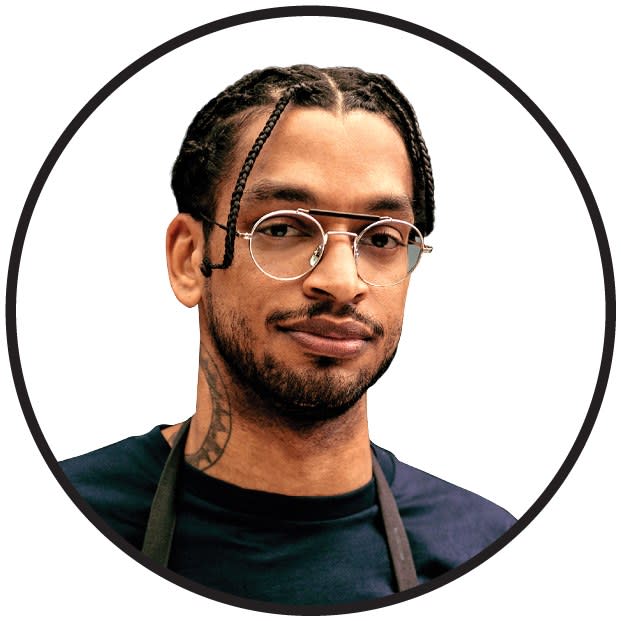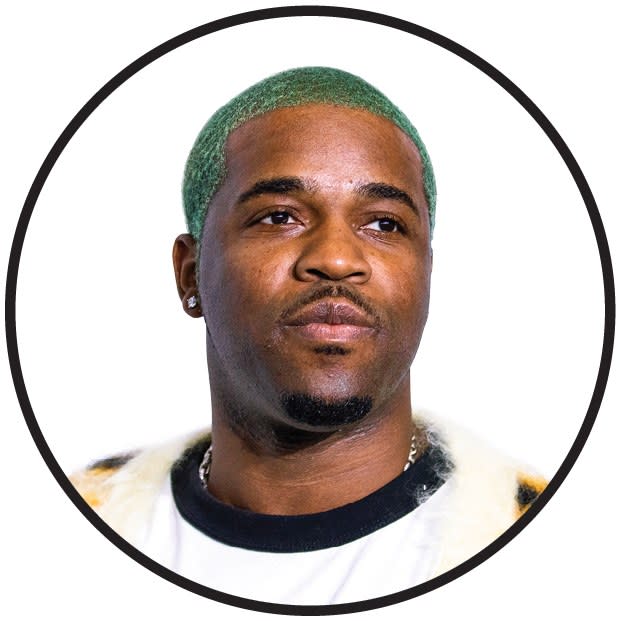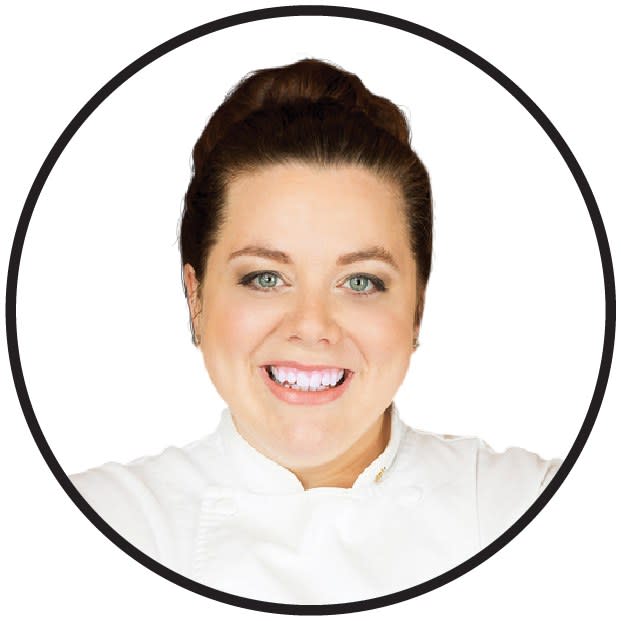How to Find Your Best Diet
It was just a few years ago that you might have felt sheepish about warning the host of a dinner party that you are a pescatarian or asking a server whether a dish was, say, gluten- or dairy-free. Now, finally, the culture has changed. We are all free to let our freaky food flag fly. You have celiac? Tell us more! You're vegan? How long and how do you feel? Dietary restrictions and food philosophies that used to garner eye rolls are now conversation starters. Today, more than ever, if you have the means, a vast array of choices—healthy ones—are on offer. You can pick from shelves of adaptogens, fermented foods, and probiotics at your local grocery store. Eat a diet specified according to your dominant dosha. Or chow down on a vegan Beyond Meat patty at any number of fast-food chains. We all have different needs. So we all eat different—and there's nothing wrong with it. It's just a matter of figuring out what's right for you now. In the spirit of today's eat-my-way ethos, we asked a spectrum of conscientious eaters how they feed themselves, and others, now.

Brunello Cucinelli
The Fashion Designer Who Believes Simple, Communal Meals Feed the Soul
Today, if you visit Brunello Cucinelli's company headquarters in the medieval Italian village of Solomeo, you won't see any of his employees hunched over salads or fast-casual bowls on their desks at lunchtime. At 1 p.m., everyone takes a 90-minute lunch break at the brand's cafeteria, where they commune over wine and a three-course meal typically of pasta, grilled meat, fish, or eggs, and fruit prepared by local cooks with ingredients grown on his land.
Cucinelli didn't have much growing up. On his family's farm in Umbria, breakfast consisted of bread and milk straight from the cow, lunch was tomato sauce with homemade pasta (they couldn't afford to buy spaghetti), and for dinner, game that they had hunted. In his family of 13, food and company held equal importance. “There was a great respect for eating,” he recalls. “It was a rite. We would all sit around the same table, and everybody would tell a story.”
Now the founder and CEO is a billionaire, thanks to his namesake company built on ultra-luxurious cashmere sweaters and sprezzy Italian suits, yet he still has an almost religious reverence for the Umbrian way of eating from his youth: humble meals with family. “It was really very, very simple food, but still, I have it in my heart, in my mind, in my soul,” he says. Cucinelli follows the advice of the Benedictines, some of whom lived in Umbria centuries ago. “In the Benedictine culture of this Umbrian region, the recommendation is not to eat too much in the evening,” he says. It's a piece of wisdom modern eaters are just starting to catch up to.
Cucinelli's meals, while uncomplicated, are made with premium fresh produce from local gardens around Solomeo. “It has always been said that in Italian cuisine, every dish must contain not more than three ingredients or flavors,” he says of his devotion to simplicity. “Today we grow our fruits, our vegetables, the way we did 50 years ago. We do it according to nature. We don't add anything chemical. Everything happens with respect and harmony with creation.”
Even on workweek days, he takes a short nap after lunch and encourages his employees to do the same. To Cucinelli, meals aren't just fuel but sacred rituals, places where great questions are debated and stories are shared. “Our soul needs to be fed on a daily basis too,” he says, “as much as the body and the mind.” —Samuel Hine

Jean-Georges Vongerichten
The Michelin-Starred French Chef With a Vegetarian Tasting Menu
The New York City-based, Alsatian-born Jean-Georges Vongerichten, who operates more than 30 restaurants around the world, has long been a sovereign of fine dining. Now he's pivoting toward a new role—as a champion for plant-based eating.
When I was growing up in France, the meals my family made were 65 percent vegetables—a small roast pork to feed the entire family, vegetables from our garden, and some grain. So when I opened Jean-Georges, in 1997, I wanted to do composed dishes—not just with meat and fish but with a lot of vegetables too. But back then, the availability of varied, fresh vegetables in New York was not that much. As time went by, though, more people were asking for a vegetarian menu, so we would create one à la minute using what we had in the kitchen. The availability at the Union Square farmers market was [also] improving—six different colors of carrots, five colors of beets. People wanted to eat more vegetables for their health and also for the sake of preserving nature. It takes two weeks to grow a radish but two years to grow a steak. I opened ABC Kitchen, in 2010, and abcV, in 2017, because people were saying, “You are doing such a good job with cooking vegetables, why don't you open a vegetable restaurant?” And in September, I added a vegetable tasting menu to Jean-Georges. When you consider the array of vegetables and herbs and spices, there is no limit. You can be more creative. They make you think outside of the box, be more experimental, and feel better about the future of the planet. It is more gratifying. And nobody needs to eat a three-pound steak. We are going back to what we are supposed to eat. I want to be a part of that future. —As told to Priya Krishna
Fitness & Protein Morning Shake
At Jean-Georges Vongerichten's extremely fashionable plant-based restaurant, abcV, the old bodybuilding protein shake gets a chef-y update. It uses a luxe mixture of six nut and seed butters (pecan, hemp, chia, poppy, almond, and macadamia). But almond butter is a great substitute.
1 medium frozen banana
¼ cup plus 2 Tbsp. unsweetened almond milk
½ cup frozen blueberries
1 Tbsp. nut butter
1 Tbsp. brown rice protein
1 Tbsp. hemp protein
½ tsp. vanilla extract
1 ½ small dates
Purée all ingredients in a blender until smooth

David Zilber
Noma's Director of Fermentation Wants You to Ferment Everything
Along with chef René Redzepi, Zilber cowrote 'The Noma Guide to Fermentation', bringing cutting-edge R&D lessons from the world-renowned Denmark restaurant to the masses.
It seems like more and more people are getting into fermenting at home. What's going on there?
People get really fucking fired up by the fact that there's that holy-shit moment: “Wow, it's not just sauerkraut, it's not just kimchi, it's not just pickles. It's everything. I can make meat taste different if I want to. I can make fruit taste different if I want to. I can enter this pact with nature and interact with the food that I produce and eat.”
You say fermented foods not only taste good but also feel good to eat. Why is that?
You end up tasting the molecules responsible for satiety in a higher quantity than you would in a traditional meal. By outsourcing that act of digestion, your body assimilates them at a much higher rate. Meals at Noma always leave you feeling full but never bloated. [At] Noma, vegetables, because of fermentation, can be as delicious as any steak.
Fermentation has been around forever, but it seems like Westerners started talking about it more recently.
The reason why it's exciting is because things go wrong on occasion—the splendor of the natural world is the diversity and uncontrollability of fermentation writ large. When you understand that, it lets you ferment better and lets you move through the world more at peace, with more understanding, with more appreciation for the natural world, and that is a really fucking powerful thought. —Cam Wolf

Jason Widener
The Erewhon VP Who Knows All the Next-Level Groceries for “Radiant Living”
L.A.'s cult health-food mini chain Erewhon has been the bleeding edge of wellness, drawing fit celebrities like Jake Gyllenhaal and the Goop queen herself, Gwyneth Paltrow. So we asked VP Jason Widener, who started out as a tonic-bar barista, about what we should be stuffing into our eco-friendly totes. —As told to Mari Uyehara
1. Jing Herbs Reishi
“A medicinal mushroom that's been used for thousands of years, it's revered. It's very calming but [also] raises consciousness and cognitive functioning.”
2. Jing Herbs Cordyceps
“It's amazing for energy. It helps you absorb more oxygen. Athletes use it. It's great for the immune system. With different types of mushrooms, you [get] a compounding effect.”
3. Pitaya (Dragon Fruit)
“It's a prebiotic. People use it in smoothies, and it feeds good bacteria and the body's microbiome.”
4. Flora Pumpkin Seed Oil
“When I get off my oils, I can feel it. Pumpkin seed oil is great for your prostate because it's so high in minerals. There's a consensus [that] there are parasites in your body. This oil is antiparasitic—it's going to help get rid of that.”
5. E3Live Blue-Green Algae
“Your body detoxes naturally, but because of pollution and food today, our livers are overtaxed, our kidneys are overtaxed, our blood needs cleansing. That's why you want blue-green algae.”
6. QuintEssential Quinton
“Phytoplankton bloom is a pure source of food for whales. It's highly nutritious and detoxifying.”
7. Maui Nui Venison
“This is invasive deer—wild Hawaiian venison. It's sustainable. It's clean meat. Anything wild that's foraging on Hawaiian foliage is going to be really good.”
8. HealthForce Spirulina
“Almost a complete food that's alkalizing, liver detoxifying, and blood building. It has chlorophyll, the blood of the plant, which gives you energy—micronutrient energy.”
9. Medicinal Foods Chocolate-Covered Sprouted Almonds With Maca, Chlorella, and Ashwagandha
“A raw nut is much harder for your body to digest. After sprouting, it becomes more enzyme-rich and bioavailable.”
Erewhon's Immunity Bone Broth Tonic
At the Erewhon tonic bar, there's a potion for every need and desire. This one highlights immune-system-supporting turmeric and reishi to chase away the winter sniffles.
1 ¼ cup organic beef bone broth
2 ½-inch piece of fresh turmeric
½ Tbsp. lemon juice, about ¼ of a lemon
½ tsp. reishi powder
⅛ tsp. ginger juice
⅛ tsp. Himalayan salt
Optional: ½ Tbsp. beet juice
Whisk all ingredients together in a small pot over medium-low heat until heated through, about 3 minutes. Strain before serving, if desired.

A$AP Ferg
The Touring Rapper on a No-Carb Diet
We caught up with rapper A$AP Ferg while on the road touring for his latest album, 'Floor Seats', where his daily routine revolves around performing high-energy shows and trying to kick his carb habit.
I've been on a no-carb diet since I started my tour in early November. When you've got two months on a bus, you can kind of contain everything. Your schedule is the same every day. So I like doing challenges when I'm on the road. This tour, I'm trying to reach a weight goal that I'm going to keep to myself. It's been about a month, and I've already lost 13 pounds.
I'm 31 now. As you get older, you take more notice of the changes that are happening in your body and how it breaks down food differently. I'm into fashion, so I want to be able to fit into certain things. You can't be jiggy in your clothes if you're not looking and feeling right. Also, I want to be light on my feet when I'm performing. I'm onstage for four hours every night—for two months. I want more energy.
My father died of kidney failure, so I've always been conscious of working out and what I put in my body to live longer and feel good. And everyone who's a little stocky and naturally built like me has to watch what they eat. Sugar sticks to all the people in my family. I love candy. I love cookies. I love potato chips. I love all the bullshit food. But a lot of those carbs don't do anything for your body, so it makes no sense to eat them.
I have a chef that's with me on tour, so I don't have to think about where I'm going to get my next meal from. I usually do breakfast of an egg-white omelet with turkey bacon. Then I'll have a protein shake after my workout. I will try to do fish or chicken with vegetables or a salad before my performance. And then after I perform, I'll have dinner, which is another plate of protein and vegetables. I've also learned you gotta take your vitamins every day: fish oil, C-1000 antioxidant protection, vitamin D3, and omega 3–6-9 [a blend of the healthy omega-3, -6, and -9 fatty acids]. If I cheat, then the next day my trainer makes my workout that much more gruesome. You have to work it out. But I haven't cheated yet. This is the best I've ever felt in my life. —As told to Clay Skipper

Cassidee Dabney
The Gluten-Intolerant Chef Who Welcomes Wellness Retreaters to the Great Smoky Mountains
As the executive chef of renowned restaurant the Barn at Blackberry Farm, a 4,200-acre estate in the Great Smoky Mountains, Cassidee Dabney put the tiny Tennessee town of Walland on the culinary map with her elevated Appalachian tasting menus. But when she recently developed a gluten intolerance, she started to rethink how to manage the growing list of guests' dietary restrictions without compromising the dining experience.
When did you start hearing about food sensitivities as a chef?
I started working at Blackberry Farm in 2005, and very rarely did you hear about gluten intolerance. The change happened very slowly, but it felt like the next thing you know, you wake up and are like, “Oh, my God—no one can eat anything.”
Is that particular to Blackberry Farm?
We are a resort, and we have lots of people coming in for different reasons. We normally have a vegetarian, a vegan, and a regular menu. And we always call guests to ask if there are dietary preferences or allergies. If we have a kosher guest, we will get kosher proteins. If there is a latex allergy, we buy things that have never seen latex.
In the past, chefs have had the reputation of not accommodating dietary restrictions. But now chefs themselves seem to be more conscious about their diets.
Last August, I was trying to lose weight for a television thing, so I went on a low-calorie diet, and I kept not eating gluten. When I tried to reintroduce it, my body was like, “No, you cannot have that.” Also, every January, the cooks pick a dietary restriction and live that way for a month. It is eye-opening. Two years ago, I went vegan. I was craving a burger, and I realized that most veggie burgers have gluten in them. It sucks to go to a restaurant and have only four things on the menu that you can eat. I know how good it feels to be taken care of.
That seems like a lot of work.
Accommodating all these restrictions usually adds about two hours to our work each night. But it's good that people are more aware of what they are putting into their bodies and their reactions to it. And chefs are finally feeling empathy toward them. —P.K.
How A Social Media Mom Hyped The Drop Of A New Apple Breed
Bred at Washington State University, the Cosmic Crisp apple dropped with the magnitude of a new Supreme collection last December. It combines the sweet-tart flavor of the Honeycrisp with the hardiness of the Enterprise (it can reportedly last up to a year chilled), and Washington State growers, who paid for the research, bet big on the apple by planting some 12 million trees. When produce-industry players like the Watermelon Board or Dole want to move product, they call “the Produce Mom,” Lori Taylor. “This is the largest fruit and vegetable launch of all time,” she says. She was tapped as part of the “Influencer Team” for the Cosmic Crisp's mammoth-for-an-apple $10 million marketing campaign, assembled by Proprietary Variety Management. Before the Cosmic Crisp's launch, Taylor ginned up the Produce Moms website with recipes for a no-bake apple tart and apple dog treats. “To try the Cosmic Crisp is to love the Cosmic Crisp,” she coos. —C.W.

J.B. Smoove
The Grill-Master Actor Who Became a Hard-Core Vegan
Stand-up comedian and 'Curb Your Enthusiasm' star J.B. Smoove used to joke that he was a “part-time vegan, full-time carnivore.” Two years ago, he went all in and hasn't looked back since.
My wife and I have been together for 18 years, married 15. She hasn't had meat in over 27 years, I think. I'd be on that grill all day making food. People would come to my house for Thanksgiving dinner just because I made deep-fried turkey. I called myself part-time vegan, full-time carnivore: Whenever she cooked, or if she wanted to go to a vegan restaurant, that's what I ate. But when I was traveling on the road, I was on my normal country-boy diet.
New Year's of 2018, I went full-time vegan. I knew it would make my wife so happy, because she's been trying to convert me for years. For me it was like, “You know, I'm going to give it a try. Let me see how long I can go before my country boy kicks back in.” Then I realized how long I had actually been vegan, and I said, “You know what? I don't think I got to go back.”
I do it for diet. I do it for health reasons. I do it for animals, for the planet. For me, it's a wide spectrum. I've always been tall and lanky. But I was at 205 when I went vegan, and my body immediately dropped down to like 175 out of nowhere. I've evened out, so right now I carry my body weight at 185. I'm comfortable at 185. That's my body weight that I love, because I don't get the little muffin top, you know? I look good in my damn suit.
My buddies ride me. They'll tease me while I'm on the road. We'll go to a restaurant after-hours, and so they'll say, “Come on, man, just one Buffalo wing, man. We won't tell Shah”—my wife's name—“we won't tell her, man. Just take a nice bite, man. You can order the chicken and waffles, man. We won't say anything.” But I will say this: They all are saying they've been going to the doctor or they want to lose some weight and want to get healthy. They all say, “You know what, man? I'm thinking about doing it for three days a week or trying it for a month or two and seeing how it works out.” —As told to Gabriella Paiella

Satchidananda Panda
The Scientist Researching Time-Restricted Eating (a.k.a. Intermittent Fasting)
These days, it seems like almost every other person—Jimmy Kimmel! Chris Hemsworth! Jack Dorsey!—is singing the gospel of intermittent fasting. But Satchidananda Panda, a professor at the Salk Institute for Biological Studies and one of the world's leading researchers in the field of circadian rhythms, actually studies it on a scientific level, shaping how the public approaches intermittent fasting now and in years to come.
What are the benefits of time-restricted eating?
Every organ has its own clock: There's a time of peak performance, and there's a time when they repair and rejuvenate. For example, every day we damage up to one tenth of our gut lining. (The pH of our gut is 1.5, so it's very acidic. If you put that on paper, that paper will disappear in a couple of days.) So each night, our gut replaces somewhere between 7 to 10 percent of its lining. And just as you cannot repair a highway when traffic is flowing, you cannot repair gut lining very well if there is food in the system.
What are some of the misconceptions?
You usually see people eating for 8 hours and fasting for 16. But our studies on mice have shown that eating within a 10-hour window is very similar to an 8-hour window. In fact, 11- and 12-hour windows will also give you a benefit—but not as much. Every nutritionist will come up with his or her own modification: “Skip breakfast.” “Skip dinner.” “Eight hours is the magic number.” But no long-term studies have been done on humans. We think 10 hours is a sweet spot. Your last calorie of the day should be at least two to three hours before going to bed. When we eat, blood circulation goes to our stomach to absorb all the nutrients. That raises our core body temperature, which makes it difficult to fall asleep. And two to three hours before going to bed, our melatonin levels rise. That makes our brain sleep, but it also makes our pancreas [which produces insulin to help the body process carbohydrates into energy] go to sleep. There's not enough insulin to absorb glucose when we eat late at night.
Has your own diet changed over the course of your research?
Two things have changed for me since I started time-restricted eating myself. My food-and-drink preferences have changed. I used to love gin and tonics and rum and Cokes. Now I can't drink hard liquor. And my salt threshold has changed, so I can't eat pizza from certain shops I won't name. Also, since I'm going through 14 hours of fasting, my breakfasts are bigger. And because of that, I almost never snack between breakfast and lunch. We see that in all of our studies on time-restricted eating: Many people eat fewer snacks. —C.S.

Alexis Ohanian
The Steak-Eating Entrepreneur Who Switched to a Plant-Based Diet
Before his daughter, Olympia, was born, Alexis Ohanian, cofounder of Reddit and venture capital firm Initialized Capital, took a hard look at his health and began investing figuratively and literally in the plant-based movement while taking notes from his wife, Serena Williams (also known as the greatest tennis player ever).
What about the birth of your daughter motivated you to reexamine your diet?
My first come-to-Jesus moment was when we found out that Serena was pregnant. That's when it really hit me. I don't want to be an unhealthy, lethargic dad when Olympia wants to practice soccer in the backyard. I spent all of my 20s focused single-mindedly on my work—I made sacrifices to myself physically and mentally in the pursuit of that. Previously, there were weeks where I'd order a ton of steaks on Instacart and put some spinach leaves on the side as my “side salad.” I'd eat that three, four, five times a week. Easy.
How did your diet change?
Things really changed when I watched this early cut of The Game Changers to see if I wanted to get involved [as an executive producer]. In the film, a bunch of guys who look like me—big dudes—made a great scientific and athletic case for eating plants. Around the same time, I tried the Impossible Burger, and I was like, “Damn! This is good!” It wasn't long after that I invested in it. Now I'm whole-hog, so to speak, on the plant-based revolution.
Have you been able to take any pointers from how Serena eats?
She's on a whole different level when it comes to what she eats and how she exercises. But I'm always bugging her to drink more water, actually. For years, going back to when we were dating, I'd watch her go work out in the morning without eating food. It didn't really hit me until I fell down some rabbit hole on YouTube and saw this video saying it's actually better to run on empty. I looked over at Serena like, “Goddamn, you've been doing this the entire time and I've totally missed it. Do you ever eat before practice?” She was like, “No, never.” From that moment on, when I do show up in the gym, it's on an empty stomach. For her, that's business as usual. For me, it was an epiphany. —Alex Shultz

Sue Bird
The WNBA Star Who Powered a Comeback Through a Rebooted Diet
Point guard for the Seattle Storm for the past 17 years, 11-time All-Star Sue Bird has played more games than any other athlete in WNBA history. At 39, she's the oldest player in the league—with no eye on retirement—thanks in part to a diet-and-nutrition plan she rejiggered four years ago.
My career was plateauing. I'd had three surgeries over two years. I looked in the mirror, and I wanted to make sure I was going to do everything I could to turn things around. One of those parts was my nutrition. I used to pound pasta. I would smash grilled cheeses. I used to eat pizza before games. That's not hindering your performance per se, but you're not getting the fuel you need.
My diet [now] totally revolves around basketball: I'm constantly in a cycle of fueling for my workout and refueling after my workout—and then repeat. A typical day starts with an egg sandwich with spinach, onions, two eggs, on a gluten-free bagel or English muffin—some sort of carb. Then I'll go work out. The minute I'm done, I'll have a protein shake: almond milk, orange juice, frozen strawberries, and protein powder. Then, within an hour of working out, I'll have lunch. It's [about] four ounces of protein, two servings of vegetables, and two servings of a carb. A burrito is a great bang for your buck if you choose the right toppings (no sour cream, no cheese), but get your protein, your veggies, maybe some guac, because avocados are good for recovery, wrap it up in the tortilla—boom. Then for dinner: four ounces of protein, some veggies, and a starch. I don't eat “white carbs” at night, so no bread. But I'll have sweet potato or spaghetti squash.
I totally prescribe to an 80/20 lifestyle. So 80 percent of the time, I'm dairy-free, I'm gluten-free. But then 20 percent of the time, I go enjoy something that I really like: pizza, burgers and fries, ice cream. That keeps me sane. It would have been fascinating to know what might've happened if I was eating the way I am now at 25. But right now I feel good for being 39. I feel great for being 39. —As told to C.S.
A version of this story originally appeared in the February 2020 issue with the title "How We Eat Now."
Originally Appeared on GQ
